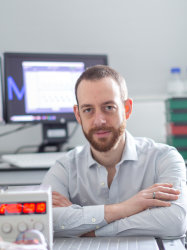BibTex format
@article{van:2021,
author = {van, Batenburg-Sherwood J and Balabani, S},
journal = {Biomechanics and Modeling in Mechanobiology},
title = {Continuum microhaemodynamics modelling using inverse rheology},
year = {2021}
}

Faculty of Engineering, Department of Bioengineering
LecturerUren 416ASir Michael Uren HubWhite City Campus